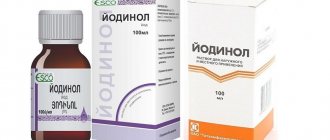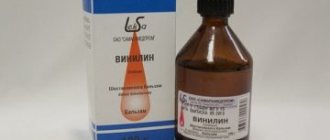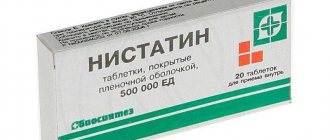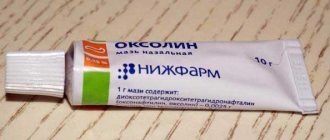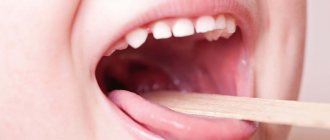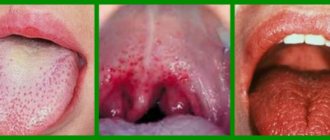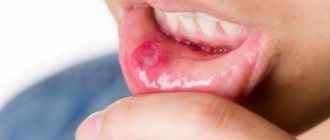Causes and risk factors
The mucous membrane of the child's oral cavity is often injured. The appearance of ulcers can be caused by temperature effects (hot food and drinks), biting the inner surface of the cheeks or lips; damage by sharp edges of the filling, braces or the tooth’s own tissues in case of chipped enamel. Normally, the immune response allows the pathological process to be quickly eliminated, the mucous membrane heals, and bacteria do not have time to cause severe inflammation and ulceration.
Weakened children's immunity cannot cope with this task, which leads to the development of aphthous stomatitis. A small number of opportunistic bacteria that populate the oral cavity begin to actively multiply. Often the disease occurs against the background or as a result of a severe infection: influenza, ARVI, acute tonsillitis, infectious mononucleosis, etc.
Main risk factors:
- food allergies, allergic reactions to hygiene products, such as toothpaste;
- deficiency of vitamins and microelements due to a strict diet or impaired digestion of food;
- hereditary predisposition;
- foci of infection in the oral cavity: caries, chronic periodontitis, periodontitis, gingivitis;
- frequent respiratory diseases;
- severe systemic diseases: pathologies of the endocrine system, blood vessels, metabolic disorders, etc.
Ask a Question
Forms of the disease
According to the ICD, aphthous stomatitis is assigned code K12.0. There are two forms of the disease - acute and chronic. The second is characterized by frequent relapses and may be a consequence of inadequate or untimely treatment of acute inflammation.
An acute disease is characterized by severe symptoms. It begins quickly, severe pain occurs at the site of mucosal damage, and the child may refuse to eat. In some cases, body temperature rises, weakness and lethargy occur.
The chronic form is characterized by a sluggish course; the child’s general well-being does not suffer. The disease can recur up to several times a year.
Symptoms of aphthous stomatitis
The onset of acute aphthous stomatitis in children may resemble ARVI: there is malaise, increased body temperature, and more profuse salivation may appear. The main symptom of the disease is the appearance of ulcers in the mouth: first, a red dot appears on the mucous membrane, which subsequently becomes an ulcer (aphtha) within 2-3 days. Accidental touching causes pain. The child refuses food and hygiene procedures.
Single erosions occur more often, but there are cases of multiple aphthae formed in groups. They usually measure up to several millimeters, but in severe cases the diameter of the ulcer reaches one centimeter. The disease is characterized by the appearance of a bright red rim around the aphthae; a grayish or yellow film-like coating forms on it.
There are also general symptoms that accompany aphthous stomatitis. These include:
- sleep disturbances (due to pain or discomfort);
- decreased appetite;
- pain while talking;
- increased fatigue, lethargy;
- whims, irritability.
Early treatment of aphthous stomatitis in children can prevent complications, shorten recovery time, and prevent further development of the disease.
Types of stomatitis
Infection of the oral cavity can be caused by both viruses and protozoan microorganisms, which are an integral part of the human microflora and do not manifest themselves in any way if the immune system works without failures.
Children with low body weight, premature babies and those who often suffer from colds (respiratory) diseases are most susceptible to the development of stomatitis.
In the photo: the location of stomatitis in different parts of the oral cavity in children
Depending on the type of pathogen, several types of stomatitis are distinguished.
Viral (herpetic)
Occurs as a result of infection with the herpes virus. Children aged 1 to 3-4 years are most susceptible to this form of stomatitis. After the virus enters the body, an incubation period begins, which can last more than two weeks (in rare cases, the incubation of the virus takes 30 days).
The disease is severe: the child becomes lethargic, capricious, refuses food and water (infants can push away a bottle of milk and their mother’s breast).
Body temperature usually fluctuates between 37-38.5 degrees, but in exceptional cases it can reach 39 and even 40 degrees. In this case, we recommend reading what to do if your child has a fever. The rash characteristic of herpetic stomatitis can cover not only the oral cavity, but also areas of the face and ears. In case of moderate and severe damage, the child must be admitted to a hospital.
Fungal (candidiasis)
Candidiasis (thrush) is caused by fungi of the Candida family.
Even a newborn baby can become infected with thrush. Cases when a baby becomes infected in the maternity hospital account for about 40 percent of all candidiasis diagnosed in infants.
The main sign of pathology is a white cheesy coating covering the mucous membranes, the inner surface of the cheeks, gums, tonsils, tonsils, etc. Often, candidiasis is accompanied by glossitis - damage to the surface of the tongue. Candidal stomatitis in children is accompanied by elevated temperature (within 37.6-38.1 degrees) and a general deterioration in health.
Aphthous
This type of stomatitis rarely occurs in children under 5-7 years of age.
Pediatricians still cannot come to a consensus on what exactly causes the aphthous form of the disease. Some believe that the problem is problems with the functioning of the gastrointestinal tract; others are inclined to believe that the disease is of an allergic nature. It is the second version that is now recognized as more reliable.
With aphthous stomatitis, the baby develops aphthae - these are oval or round ulcers with clear, even edges and outlines. As the disease progresses, the aphthae becomes covered with a dense film. If it breaks through, the wound may become infected, which significantly aggravates the course of the disease and reduces the effectiveness of the therapy.
Bacterial
Caused by pathogenic bacteria, infection with which is often a complication of diseases of the oropharynx (laryngitis, tonsillitis, pharyngitis, etc.).
A separate type of stomatitis is traumatic (the result of mechanical damage to mucous areas) and allergic, which is a consequence of contact with allergens and increased production of histamine.
Features of treatment
To diagnose a disease, only a visual examination is often sufficient, but in some cases laboratory diagnostics are required to determine the causative agent of the inflammatory process and the sensitivity of bacteria to antibiotics. Treatment should be carried out by a dentist, and the treatment regimen is developed individually, taking into account test results, the age and well-being of the child, the causes of the disease, the area of mucosal lesions and other conditions.
If the question of how to treat aphthous stomatitis in children is decided individually, then recommendations regarding eating behavior and hygiene are general for all cases. Such recommendations include the following:
- avoidance of too hot or cold drinks and foods;
- following a hypoallergenic diet;
- refusal of food that irritates the mucous membrane. This list includes fatty, salty and spicy foods, marinades, solid foods;
- adding pureed and soft foods to the menu. This includes cream soups, porridges, pre-boiled meat;
- drinking enough liquid;
- careful adherence to oral hygiene: using brushes with soft bristles, rinsing the mouth after each meal.
Local drug treatment consists of the use of such agents as:
- rinses or irrigation solutions (for children who do not yet know how to rinse their mouths) with an antiseptic effect;
- ointments and gels that stimulate the restoration of mucous membranes;
- drugs for pain relief and burning sensation.
It is important to test the product before use: apply a small amount to the crook of your elbow. If there is no redness, burning, or rash, we can say there is no allergy - the product can be used for treatment.
In some cases, systemic drug therapy is indicated. Your doctor may prescribe antihistamines to combat the allergic reaction and relieve swelling. In order to increase the resistance of the child's body, immunomodulators may be recommended. The decision on the need for antibacterial therapy is made in the case of an extremely severe course of the disease, a persistent increase in body temperature, and identification of a bacterial pathogen in a smear.
Elevated body temperature and pain are indications for symptomatic therapy. The doctor may recommend non-steroidal anti-inflammatory drugs in a dosage and form appropriate to the age of the young patient. Sometimes it is advisable to use suppositories if taking the medicine in the form of a tablet or syrup causes pain or anxiety.
Treatment of infants additionally includes disinfection of toys and teethers that the baby may put in his mouth. A nursing mother should pay attention to breast hygiene: thoroughly wash her breasts after feeding using warm water and special products.
Sometimes it is advisable to use folk remedies. Thus, rinsing the mouth with chamomile can soothe inflamed mucous membranes and speed up the healing process. However, it is important to remember that such prescriptions can only complement the main course of treatment. Don't forget to consult your doctor about the possibility of using them. Some herbs are strong allergens, so it is important to ensure that you are not hypersensitive to them.
Warming, the use of honey and alcohol tinctures are prohibited, as all this can lead to a worsening of the condition and lead to serious complications. It is better not to self-medicate, but to show the child to a qualified specialist.
Treatment of aphthous stomatitis in children usually takes no more than 7–12 days. It all depends on the state of the child’s immune system, the severity of inflammation, the number and depth of ulcers.
Stomatitis. What do they eat them with?
Authors : Solovyov D.V.
What is good about medicine (for a doctor ) is that it uses a specific language that is not very familiar to most patients. As a result, the doctor can talk about basically nothing, but in such a way that you will be confident in his intelligence and irresistibility. For example, when I hear that a doctor has diagnosed stomatitis, I already want to kill this pediatrician/therapist. Let me explain. First, let’s imagine a situation: a person has some kind of swelling in his mouth, he goes to the doctor, who confidently says: “Yes, you have stomatitis, father.” What are you saying, doctor, it can’t be! “Yeah, yeah, he is it, darling.
) is that it uses a specific language that is not very familiar to most patients. As a result, the doctor can talk about basically nothing, but in such a way that you will be confident in his intelligence and irresistibility. For example, when I hear that a doctor has diagnosed stomatitis, I already want to kill this pediatrician/therapist. Let me explain. First, let’s imagine a situation: a person has some kind of swelling in his mouth, he goes to the doctor, who confidently says: “Yes, you have stomatitis, father.” What are you saying, doctor, it can’t be! “Yeah, yeah, he is it, darling.
Common situation? Apparently the doctor did not make a mistake, he was able to recognize the trouble, and at the same time added to his authority. Now let's make a small insert. The fact is that the term “stomatitis” itself simply means “inflammation in the mouth.” And let’s now replace one thing with another in that very dialogue: - Yes, you have inflammation in your mouth, father. - ...
Now the conversation sounds bad, because the patient’s next phrase will most likely be completely different: “My dear, I can see for myself that there’s inflammation, what did you tell me that’s new?”
Do you feel the difference? Would you like it if, when you have a stomach ache, a doctor in a hospital happily said, “You have a stomach ache!”? We know this without you, that pain, you don’t need a doctor for that. Therefore, now remember one of the basic knowledge about stomatitis: there is no single diagnosis of “stomatitis”, there are a lot of different stomatitis. Therefore, when the doctor says that “there is stomatitis here,” this means that he is saying practically nothing, i.e. What kind of stomatitis this is, he still hasn’t figured out. True, in fairness, it must be said that many of the stomatitis are treated in the same way, but still not all, besides, knowing which one has decided to visit you is necessary not only for treatment. For example, this is necessary because some of them can be prevented or at least greatly alleviated at the very beginning.
So, the main points you need to know. The most common stomatitis is the so-called HRAS (chronic recurrent aphthous stomatitis), herpetic stomatitis and seizures.
Chronic recurrent aphthous stomatitis. This stomatitis is called recurrent (i.e. recurring) because it repeats during life approximately once or twice a year (more often in children), and aphthous - because it has very characteristic ulcers - aphthae, which look something like this:
This disease occurs in approximately 20% of people (i.e., it is quite common), and has been known since ancient times. Aphthae are most often single, appearing on the lips, cheeks, in the front of the mouth, on the palatine arches, tongue, and soft palate. The lesion is surrounded by a clear stripe of redness, it is quite painful, and in children it may be accompanied by general symptoms - malaise and poor health. Most often it goes away without a trace within two weeks, and the exact cause, unfortunately, has not yet been established.
Herpetic stomatitis. Caused by the herpes virus. It begins quite abruptly, with malaise, headache and pain in the mouth, which is especially difficult for children. A characteristic sign is small bubbles filled with liquid, something like this:
I would like to draw special attention to the fact that sometimes the diagnosis “herpangina” has nothing to do with herpetic stomatitis! It's just a similar (and not very good) name.
Jams. Almost everyone knows what it is, so here, perhaps, you can do without pictures. The most common causes of its appearance are streptococcus, cadidosis or iron deficiency anemia . Or rather, in children it is anemia that needs to be put in first place. Therefore, if you see that your child is visiting, don’t be lazy and take a blood test for iron. At the same time, I would like to draw special attention to the fact that it is impossible to eliminate anemia only by taking foods containing iron! There is no need to believe the recommendations that you just need to start eating pomegranates or meat in larger quantities and the anemia will disappear. It won't disappear. Products can maintain normal iron levels only when they were normal before. Anemia has appeared - it is necessary to take iron in the form of medications. There are also other stomatitis, but they are much less common.
Basic principles of treatment. I present only those things that are common to all types of stomatitis and that everyone can and should do, and at home. Some stomatitis also has its own specific treatment, which your doctor will prescribe for you.
- Pain is the leading sign of almost any stomatitis, so immediately eliminate any irritating (spicy, sour, salty) food from your diet.
- Your main task is pain relief. The easiest way to relieve pain is to pour a solution of 2% lidocaine from an ampoule into a spoon and either rinse with it for a couple of minutes (if this is an adult or child who can rinse without swallowing), or lubricate the sore spot with a cotton swab. There are also ready-made ointments with pain relief (for example, Kamistad for adults or Kalgel for children).
- Alternatively, you can freeze an ice cube in the refrigerator and suck on it (do not give to small children!).
- I was surprised to learn that it turns out that there are chewable tablets approved by the Ministry of Health that are recommended for children with teething and stomatitis. So remember: no chewable tablets should be given to infants! The reason is that small objects (including pills) easily end up in the respiratory tract of such children.
- If it is herpes, from the very first hours start taking an antiherpes drug: (for example: Zovirax (acyclovir), famciclovir (Famvir), valacyclovir (Valtrex), etc.). Remember that the sooner treatment is started, the easier you will get off.
- If iron deficiency anemia is detected, then salvation is taking iron. However, in this case, do not expect quick results. Everything here is aimed not so much at treating existing stomatitis, but at preventing its occurrence in the future.
- In addition to painkillers, you can use drugs that speed up healing. For example, this is aekol, vitamin A (naturally, in the absence of allergies).
- It may also be easier with simple rinsing. How? Even with ordinary water. The point is to wash away food residues from the painful mucous membrane, because what exactly you will do is the tenth thing.
Some additional information.
- Many stomatitis still have an unknown cause, so it is often simply impossible to establish it for sure.
- Naturally, when there is pain, it is quite difficult to brush your teeth (especially for a child). Overcome yourself, because uncleaning can lead to the addition of bacterial inflammation of the gums, which can be very difficult to cope with.
- If you see putrefactive processes on the edge of the gums in yourself or your child (this is a grayish or greenish coating), there is a further increase in temperature or a general deterioration in the condition, immediately consult a doctor!
- If stomatitis is of a traumatic nature (i.e., it appeared from constant trauma with a prosthesis or a sharp edge of a tooth), immediately get rid of the traumatic cause, because such stomatitis more often than others degenerates into cancer.
- Quite often, stomatitis is accompanied by diseases such as influenza, scarlet fever, measles, etc. Therefore, you should not leave such things to chance, even if you feel normal. If you see something unusual, especially in a child, it is better to ask a doctor.
- If you know that you are prone to developing a “fever” (herpes), you do not need to wait until the process is in full swing. As a rule, you already know exactly a certain sensation before the bubbles appear (usually it’s something like itching), so if you feel it, immediately apply the medicine. The faster you do this, the better the effect will be (it’s not the days that are important, but the hours). Remember that 95% of the world's population are carriers of the herpes virus; science cannot yet get rid of the virus once it has entered the body.
- The appearance of stomatitis of an allergic nature at least once is a reason to forever (or at least before the course of so-called desensitization) abandon the allergen that caused such stomatitis. Don't joke with allergies, these are deadly jokes.
- If any stomatitis lasts more than two weeks, this is a clear reason to visit the doctor again.
How to prevent stomatitis? Since stomatitis is different and has a completely different nature, there cannot be uniform recommendations. Sometimes stomatitis is contagious, sometimes it is not, so just in case, until the doctor expresses his opinion, you do not need to kiss the patient, or use shared utensils and towels. And also, in any case, do not forget about hygiene and, in particular, hand washing.
What not to do and what not to use.
- There is no need to use lidocaine 10% in aerosol. It anesthetizes well, but is not suitable for repeated use, because there remains a very unpleasant sensation of burning and tightening of the mucous membrane. (Also, do not forget that small children should not be sprayed with aerosols in their mouths in principle!)
- Never apply cauterizing drugs to your mouth! Firstly, with stomatitis it is wildly painful (for some reason parents especially like to do this, not for themselves, but for the child), and secondly, it can lead to the degeneration of the ulcer into all sorts of bad things.
- There is no need to use dyes (such as blue). They do not speed up healing in any way, but they do an excellent job of hiding everything, as a result of which the doctor may miss important points.
- Maraslavin at home: is still a very popular drug, although for some reason patients most often forget to inform that, firstly, it causes an increase in temperature (which is very undesirable, especially in children), and secondly, it causes loosening of the gums, making it impossible to brush your teeth at home (a visit to the doctor is required).
I will also draw attention to such a popular medicine as Cholisal. It has a very specific taste and especially smell. Therefore, before using it in children, try it in a very small dose. If the child takes it normally, use it; if not, it’s better not to force it.
Geographic tongue (desquamative glossitis). Let's take a special look at this state. It appears as whitish or “bald” spots, constantly changing their shape, size and position. One often gets the impression that the language seems to have a constantly changing picture, a “geographical map”:
Apart from appearance, there are usually no complaints; sometimes a slight tingling sensation may appear. This condition is a normal variant and does not require any treatment at all!
I hope that now you have received at least the most general knowledge of what stomatitis is and what you should eat it with. 
And the choice, as always, is yours. 
Consultations by Dmitry Solovyov at ClubCom
published 25/11/2013 13:32 updated 15/02/2018 — Diseases of the teeth and oral cavity, Dentistry
Prevention
The development of the disease can be prevented with the help of general strengthening measures: it is important to adhere to a daily routine, provide nutrition taking into account the body’s needs for vitamins and minerals, and pay attention to the prevention of infectious diseases.
The development of stomatitis can be avoided using simple measures, such as:
- regular oral hygiene, which should begin from the moment the baby’s first tooth appears;
- use of toothpastes without sodium lauryl sulfate. This component increases the risk of developing the disease;
- routine examinations by a pediatric dentist;
- rinsing the mouth after every meal;
- limited consumption of sweets.
Pediatric dentists at STOMA clinics are ready to help a child of any age. By contacting us, you can be confident in the professionalism of our specialists. We have developed effective treatment regimens for aphthous stomatitis in children. Doctors will talk in detail about preventing relapses and give recommendations on maintaining oral health.
Causes of aphthous stomatitis in children
The main causes of this disease are infectious lesions of the oral mucosa or individual allergic reactions that weaken the body’s defenses and provoke the development of the disease. Risk factors may include:
- Infectious diseases (staphylococcal infections, tonsillitis, influenza, diphtheria, adenovirus, etc.).
- Allergic reactions.
- Unbalanced diet with insufficient intake of vitamins C and group B, folic acid, as well as a number of macro- and microelements (zinc, iron, selenium, etc.).
- Anemia and diseases of the digestive system.
- Disturbances in the functioning of the immune system.
- Injuries to the oral mucosa, as well as insufficient oral hygiene in children.
